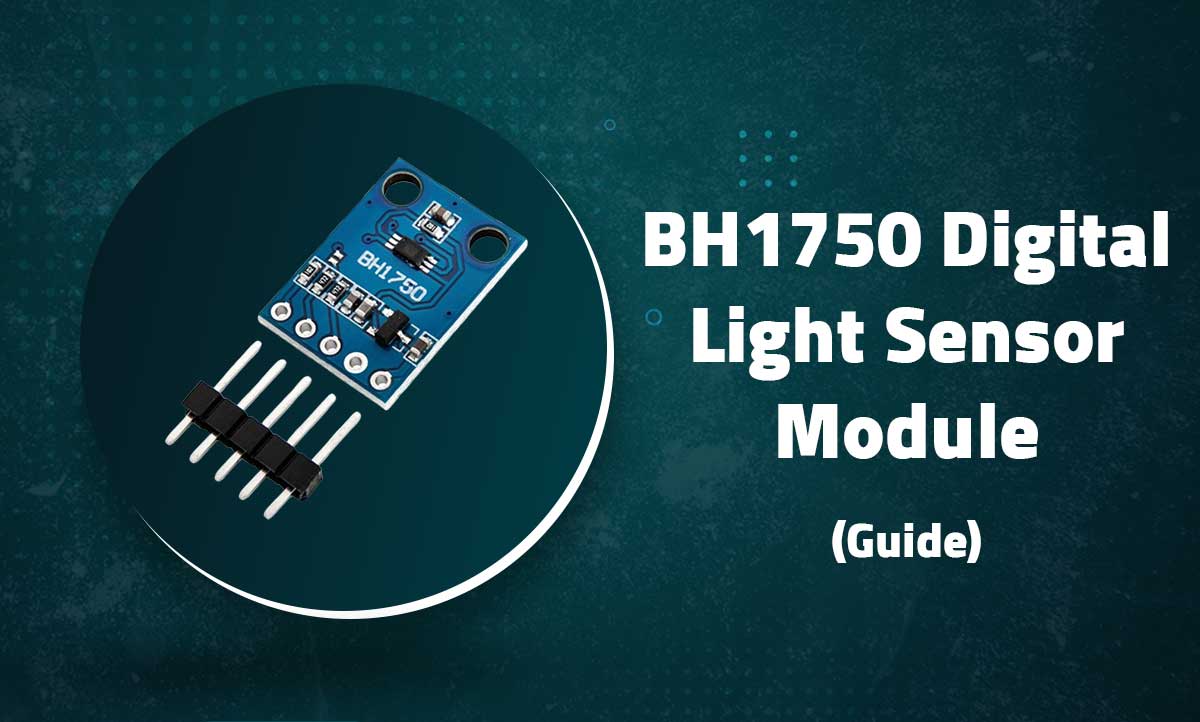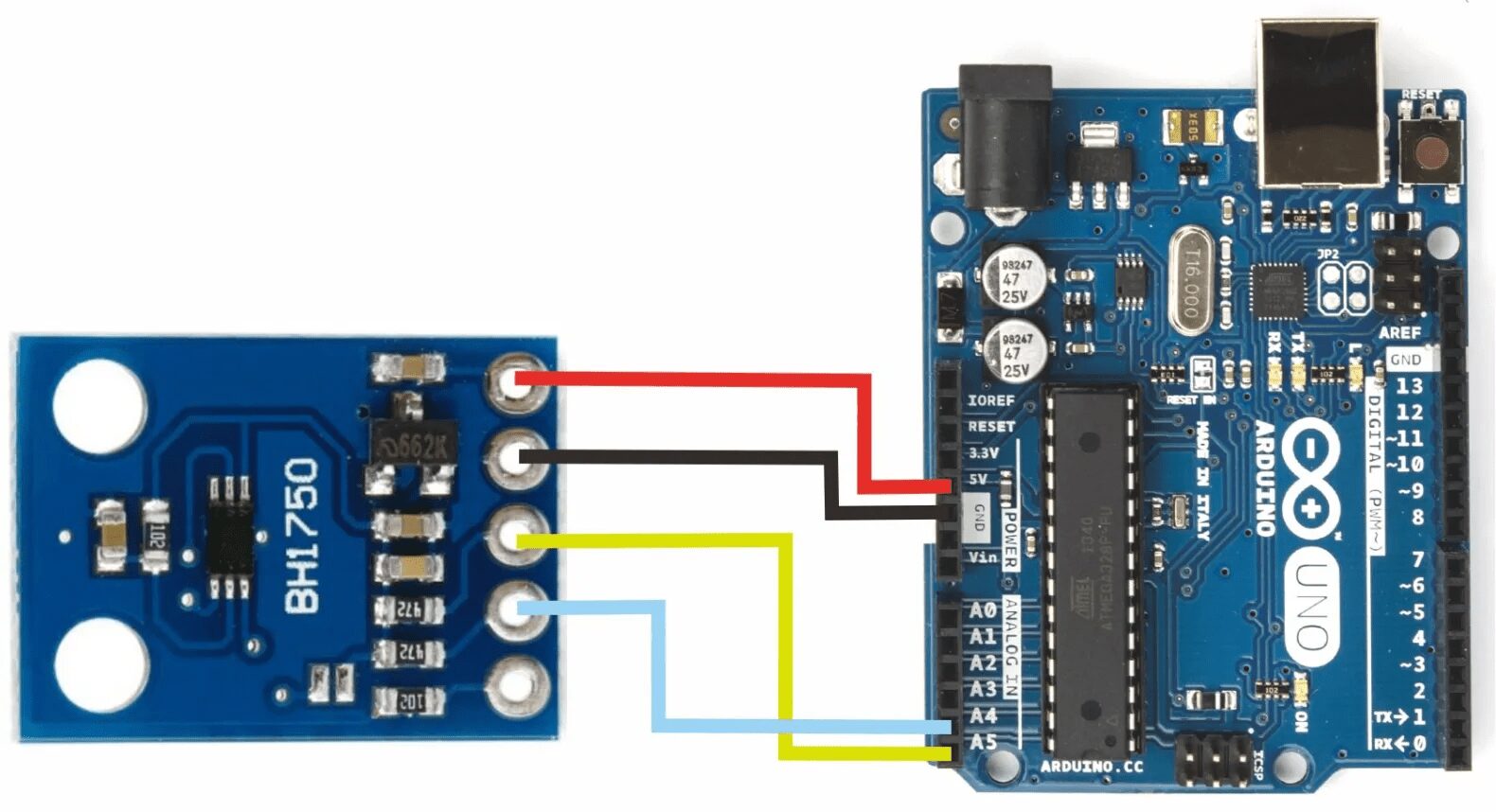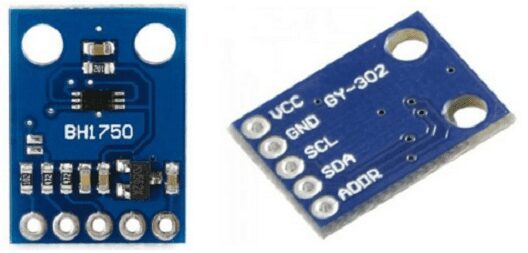GY-302 BH1750 Digital Light Sensor Module for Arduino 3V-5V

GY-302 BH1750 Digital Light Sensor Module
High-Precision Ambient Light Sensing for Arduino Projects
Introduction
The GY-302 BH1750 is a digital ambient light sensor that measures illuminance in lux (lx) with high resolution (1-65535 lx). This I2C interface module operates from 3V to 5V and is ideal for automatic brightness adjustment in displays, smart lighting systems, and environmental monitoring.
 Key Features
Key Features
Wide Range
1-65535 lx measurement range
High Resolution
1 lx resolution at low light levels
Low Power
0.12mA active current (0.01μA standby)
Spectral Response
Close to human eye sensitivity
Technical Specifications
| Measurement Range | 1 – 65535 lx |
|---|---|
| Resolution | 1 lx (at 0-5461 lx range) |
| Accuracy | ±20% (typical) |
| Supply Voltage | 2.4V – 3.6V (5V tolerant I/O) |
| I2C Address | 0x23 (default) or 0x5C (ADDR pin high) |
| Interface | I2C (up to 400kHz) |
Pin Configuration

| Pin | Label | Description | Arduino Connection |
|---|---|---|---|
| 1 | VCC | Power (3.3V recommended) | 3.3V |
| 2 | GND | Ground | GND |
| 3 | SCL | I2C Clock | A5 (Uno) or SCL |
| 4 | SDA | I2C Data | A4 (Uno) or SDA |
| 5 | ADDR | Address Select | GND (0x23) or VCC (0x5C) |
Note: Module includes pull-up resistors for I2C lines
Wiring Diagram (Arduino Uno)
// Basic Connections: // VCC → 3.3V (or 5V with level shifting) // GND → GND // SCL → A5 (or SCL) // SDA → A4 (or SDA) // ADDR → GND (for default address 0x23)
Basic Light Measurement
#include
#include
BH1750 lightMeter;
void setup() {
Serial.begin(9600);
Wire.begin();
lightMeter.begin(BH1750::CONTINUOUS_HIGH_RES_MODE);
Serial.println("BH1750 Test");
}
void loop() {
float lux = lightMeter.readLightLevel();
Serial.print("Light: ");
Serial.print(lux);
Serial.println(" lx");
delay(1000);
}
Library Required: Install “BH1750” by Christopher Laws via Arduino Library Manager
Advanced Configuration
Measurement Modes
// Set different measurement modes
lightMeter.begin(BH1750::CONTINUOUS_HIGH_RES_MODE); // Default
// Other options:
// CONTINUOUS_HIGH_RES_MODE_2
// CONTINUOUS_LOW_RES_MODE
// ONE_TIME_HIGH_RES_MODE
// ONE_TIME_LOW_RES_MODEAddress Selection
// Use alternate I2C address (ADDR pin to VCC)
BH1750 lightMeter(0x5C);Measurement Timing
// Adjust measurement time (69 default)
lightMeter.adjustMtreg(138); // Double sensitivity
// Range: 31 (min) to 254 (max)Power Saving
// Power down sensor between readings
lightMeter.begin(BH1750::ONE_TIME_HIGH_RES_MODE);
// Takes measurement then auto-powers downTroubleshooting
No Readings
- Verify I2C connections (SDA/SCL)
- Check with I2C scanner sketch
- Confirm power supply (3.3V recommended)
Incorrect Values
- Ensure proper measurement mode selected
- Check for light leaks or shadows
- Calibrate against known light source
Communication Errors
- Add 4.7kΩ pull-up resistors if missing
- Reduce I2C clock speed if using long wires
- Check for address conflicts
Related Posts
IC 74173 – 4-Bit D-Type Register with 3-State Outputs
IC 74173 - 4-Bit D-Type Register with 3-State Outputs
TTL Quad D Flip-Flop with Asynchronous Clear and Output Enable
...
DIY Metal Detector Kit
DIY Metal Detector Kit
DC 3V-5V Non-Contact Sensor Module with 60mm Detection Range
Introduction
The DIY Metal Detec...
CNC V3 Shield with 4 A4988 Drivers
CNC V3 Shield with 4 A4988 Drivers
Complete Arduino-compatible CNC controller for 3D printers and milling machines
...
CN3791 12V MPPT Solar Charger Module
CN3791 12V MPPT Solar Charger Module
Maximum Power Point Tracking Solar Charge Controller for Lead-Acid/Lithium Batteries
...
CJMCU-TRRS 3.5mm Jack AV Stereo Module
CJMCU-TRRS 3.5mm Jack AV Stereo Module
Compact breakout board for audio/video signal interfacing with TRRS connectors
...
TTP223 Capacitive Touch Sensor Module (Red)
TTP223 Capacitive Touch Sensor Module (Red)
Single-Key Touch Detection with Digital Output for Arduino and DIY Projects
...


 Key Features
Key Features
Recent Comments